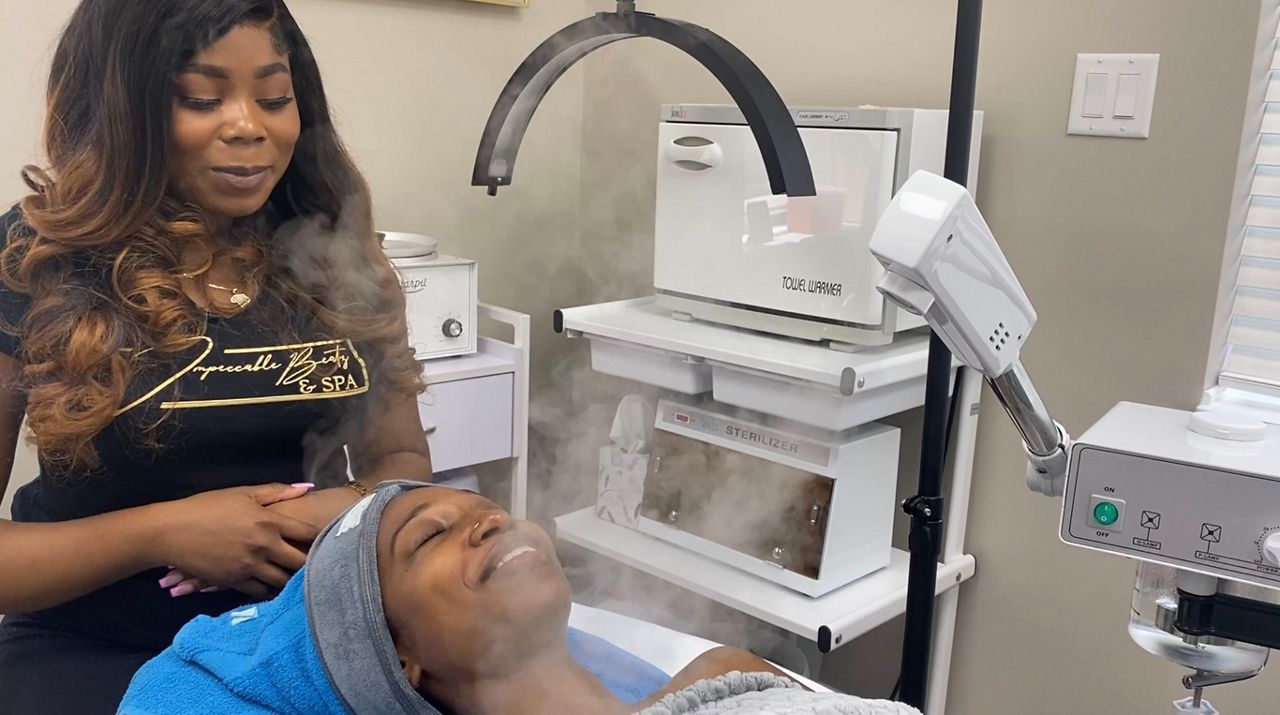Elaine Essien, a licensed esthetician for Impeccable Beatz and Spa in Albany, offers treatments and services for clients of all colors and skin types, but when it comes to melanated skin, certain care is required.
“Our skin is very sensitive especially to high heat, and it’s not one size fits all, so it requires a lot of patience and certain treatments,” said Essien.
What You Need To Know
- According to the Journal of the American Academy of Dermatology, about 3% of U.S. dermatologists are Black
- A study of general medicine textbooks showed a lack of skin type diversity, with 4.5% of images showing dark skin
- The five-year melanoma survival rate for Black patients is estimated to be only 71%, versus 93% for white patients
Severe acne, eczema and keloids present differently on darker skin and can be misdiagnosed. But not all conditions can be treated by an esthetician, who only focuses on the outer layer of skin.
“Dermatologists are allowed to go deeper into the skin and can diagnose any skin-related issues that we cannot treat, and can also provide medication and sometimes surgery,” said Essien.
Unlike the increasingly diverse field of estheticians, finding a Black dermatologist can be a bit more difficult.
Some of Essien’s clients travel more than two hours to find a dermatologist of color.

“It was very hard for me to find a person of color at my dermatology office who could actually help me with my issues,” said Brionna Neal, who was being seen for hyperpigmentation.
According to the Journal of the American Academy of Dermatology, only 3% of dermatologists in the country are Black. It's why Aleah Hunter at the Pink Powder Room said she decided to dive into skin care.
“The comfortability comes when you can relate. When someone has gone through the same experiences or looks like you, sometimes you feel safer,” said Hunter.
Hunter, a licensed esthetician, said it’s important to diversify both fields because they work hand in hand.
“Because if I see something concerning on one of my clients of color, I’m definitely going to send them to a dermatologist, and sometimes it can be detrimental or life-saving. Sometimes I’ve seen a melanoma on someone’s face,” said Hunter.
Black people are significantly less likely to get melanoma than other races. However, the five-year survival rate for the skin cancer is 93% for white people versus 71% for people of color, partially due to late diagnosis or misdiagnosis.
At one point, Hunter did look into getting her dermatology license.
“There’s not a lot resources for us when we want to become an actual MD versus going to school for trade like cosmetology or esthetics,” Hunter said. “From being an esthetician of five years, I wanted to go back to school to get my dermatology license, but at 30, I don’t know if I want to put in that time.
"When I wanted to be an esthetician, I didn’t get financial aid. I had to work three jobs to put myself through school.”



